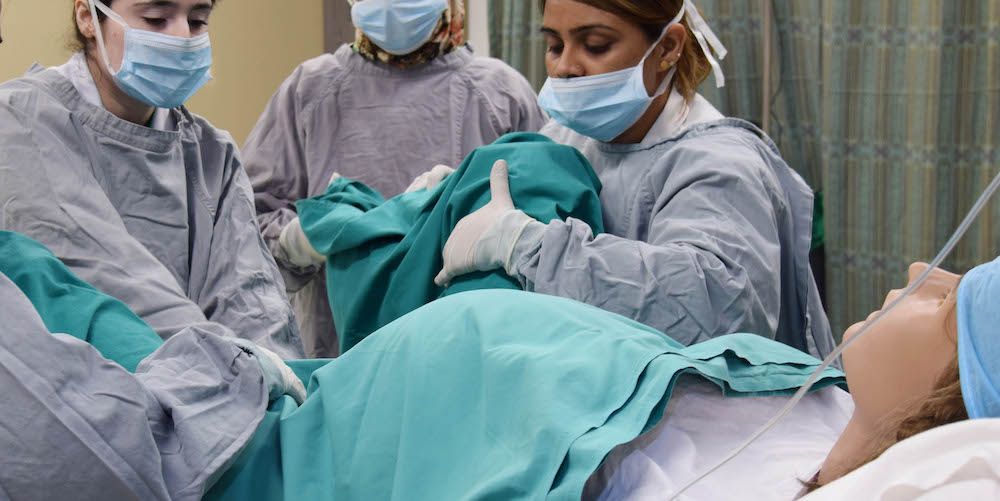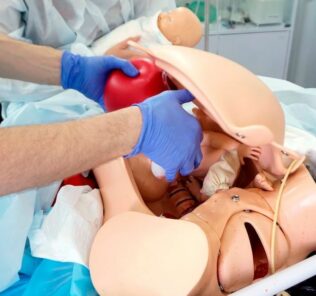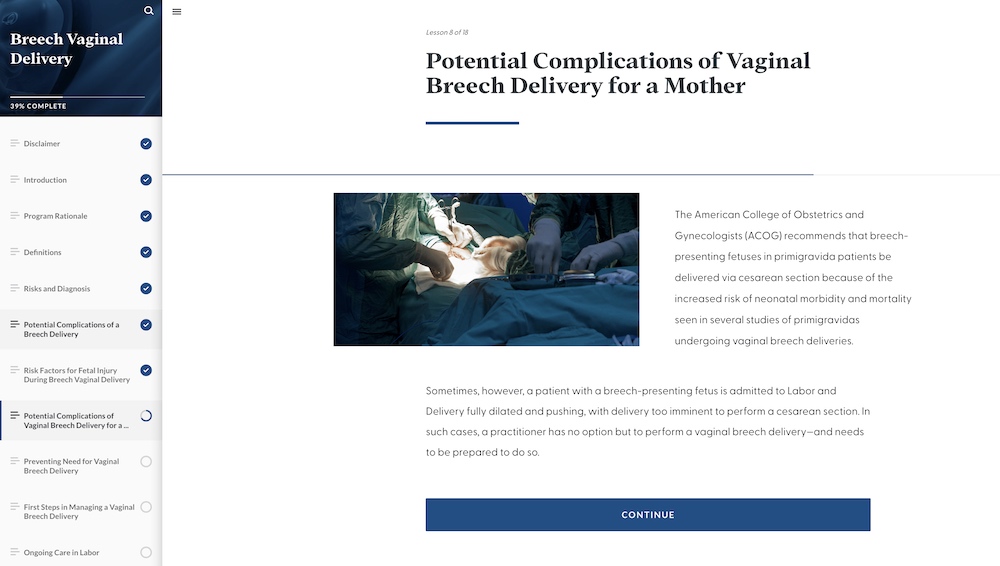OB Shoulder Dystocia Simulation Scenario From ACOG
The American College of Obstetricians and Gynecologists Healthcare Simulation Working Group has numerous resources for those using simulation in OB/GYN learning environments. Here below, we share more about this innovative working group and some of their key resources, including a link to a OB Shoulder Dystocia Clinical Simulation Scenario.
About the Clinical Simulation Working Group
This ACOG Working Group was established to showcase medical simulation as a pillar in education for women’s health through collaboration, advocacy, research, and the development and implementation of multidisciplinary simulations-based educational resources and opportunities for Obstetrics and Gynecology.
Sponsored Content:
To develop standardized curricula available to all residency programs. To develop standardized teaching and evaluation methods practiced and validated by Working Group members, to ensure the efficacy of simulations education. To provide validation of simulations-based education (as a useful teaching strategy) for developing and improving surgical skills, clinical skills, and behavioral skills with a focus on patient safety and the performance of high-quality surgical procedures.
Acquiring phenomenal clinical and surgical skills during obstetric-gynecologic residency training has always been of paramount importance. Increasing emphasis on patient safety and risk management concerns have presented convincing arguments, including strategies for ensuring that residents develop a solid foundation in teamwork, effective communication, basic surgical techniques, and demonstration of skill competencies. This should occur before residents participate in actual surgical skills and procedures in hospital operating theaters.
The development of surgical procedure simulators and simulation team training has accelerated in recent years. In 2008, the American College of Obstetricians and Gynecologists formed a Working Group of state-of-the-art simulation centers, with the goal of developing and validating a variety of Obstetrics and Gynecologic simulation-based curricula.
The Simulation in Healthcare Working Group is comprised of members geographically located across the United States.
Sponsored Content:
OB Shoulder Dystocia Simulation Scenario
Learning Objectives:
- List risk factors for shoulder dystocia
- Communicate critical tasks that should be performed when this complication occurs
- Demonstrate proper technique for basic maneuvers to relieve shoulder dystocia
- Demonstrate how to effectively communicate with delivery team during a shoulder dystocia
Background:
Mrs. Macro is a 32y/o G4P2012 at 41+0 weeks gestation. Her prenatal course has been complicated by hypothyroidism and diet-controlled gestational diabetes. She presented in active labor and has progressed over the past 8 hours. She has been pushing for approximately 60 minutes with a category 1 FHRT and was C/C/+2 at her last check. The nurse has requested that you come and check the patient and prepare for delivery.
Additional tools such as the complete list of learning objectives, formative evaluation template, discussion groups and more are available to subscribing members.
Download the Birth Shoulder Dystocia Scenario here!
About the American College of Obstetricians and Gynecologists
Founded in 1951, the American College of Obstetricians and Gynecologists is the specialty’s premier professional membership organization dedicated to the improvement of women’s health. With more than 58,000 members, the College is a 501(c)(6) organization and its activities include producing the College’s practice guidelines and other educational material.
Fellows of ACOG are board certified ob-gyns whose professional activities are devoted to the practice of obstetrics and/or gynecology, who possess unrestricted licenses to practice medicine, and have attained high ethical and professional standing.
Fellows of ACOG can be recognized by the designation of FACOG (Fellow, American College of Obstetricians and Gynecologists) after the physician’s name. There are also several other categories of membership.
Visit the ACOG Simulation Working Group to Learn More!
Lance Baily, BA, EMT-B, is the Founder / CEO of HealthySimulation.com, which he started in 2010 while serving as the Director of the Nevada System of Higher Education’s Clinical Simulation Center of Las Vegas. Lance also founded SimGHOSTS.org, the world’s only non-profit organization dedicated to supporting professionals operating healthcare simulation technologies. His co-edited Book: “Comprehensive Healthcare Simulation: Operations, Technology, and Innovative Practice” is cited as a key source for professional certification in the industry. Lance’s background also includes serving as a Simulation Technology Specialist for the LA Community College District, EMS fire fighting, Hollywood movie production, rescue diving, and global travel. He and his wife live with their two brilliant daughters and one crazy dachshund in Las Vegas, Nevada.
Sponsored Content:






















